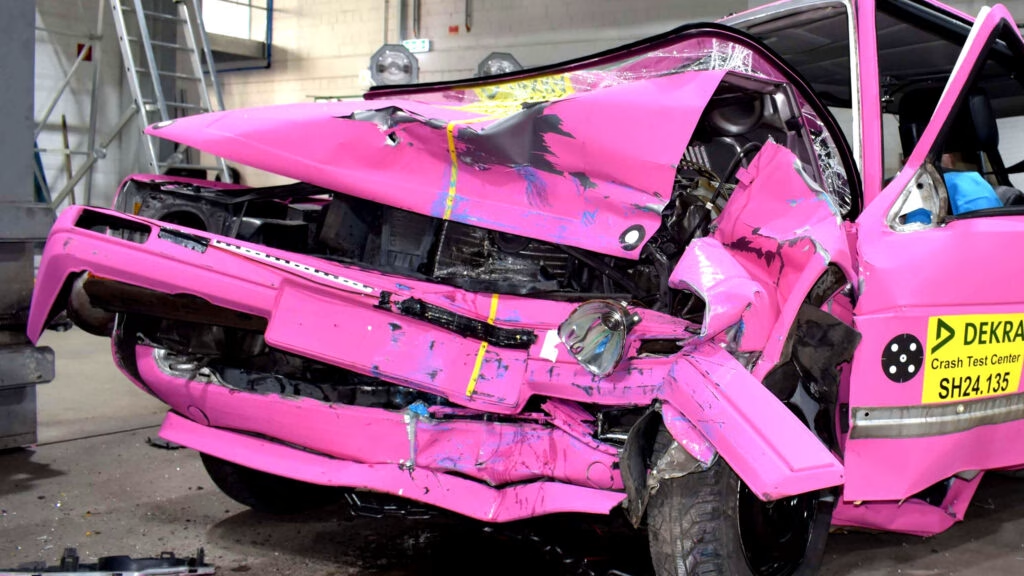How Much Safer Are Modern Cars Compared to Classics Like the 1980s VW Golf?
If you’ve ever wondered just how much safer today’s cars are compared to the ones your parents (or grandparents) drove, you’re not alone. The difference isn’t just about sleeker looks or more gadgets—it’s about life-or-death outcomes in real-world crashes. A recent head-to-head comparison by Dekra, a respected German vehicle testing organization, put this question to the test using two generations of the Volkswagen Golf: the beloved Golf II from the late 1980s and the current Golf VIII. The results? Eye-opening, to say the least.
What Happens When an Old Car Faces a Modern Crash Test?
Let’s cut to the chase: the 1980s Golf II simply wasn’t built for the kind of impacts we see in modern crash tests. Dekra subjected both cars to a 64 km/h (40 mph) offset frontal crash—the same test Euro NCAP used until 2020. The Golf II’s cabin crumpled, the steering wheel was shoved dangerously into the passenger space, and survival odds for anyone inside were bleak. It’s a sobering reminder that nostalgia doesn’t equal safety.
Contrast that with the Golf VIII. Thanks to decades of engineering progress—think crumple zones, airbags, reinforced cabins, and advanced seat belt systems—the modern Golf absorbed the impact and shielded its passengers. Dekra’s accident researcher Markus Egelhaaf stated that, in this scenario, occupants of the new Golf would likely walk away with only minor injuries. That’s not just marketing fluff; it’s the result of relentless safety innovation.
How Do Braking and Handling Stack Up Across Generations?
Safety isn’t just about surviving a crash—it’s about avoiding one in the first place. Braking performance is a huge part of that equation. Even with the Golf II in tip-top mechanical shape, it lagged far behind its modern counterpart. Dekra’s tests showed the Golf VIII could stop about 30 percent sooner than the older model, regardless of speed or road conditions. That extra distance? It could be the difference between a close call and a collision.
Handling has also evolved dramatically. In a double lane-change maneuver—imagine swerving to avoid a sudden obstacle—the Golf II was on the edge of losing control at 65 km/h (about 40 mph). The Golf VIII, on the other hand, handled the same maneuver with ease at 75 km/h (47 mph), thanks to its advanced chassis and suspension. The result? More stability, more confidence, and a lot less white-knuckle driving.
Are Modern Headlights Really That Much Better?
If you’ve ever driven an older car at night, you know the struggle: dim, yellowish halogen lights that barely pierce the darkness. Dekra’s comparison made it clear just how far we’ve come. The Golf VIII’s LED headlights don’t just look cool—they light up the road almost like daylight, making night driving safer for everyone. Even at the rear, modern LED taillights and the now-standard third brake light make today’s cars much more visible to others, reducing the risk of rear-end collisions.
What About the Downsides of Modern Safety Tech?
It’s easy to get swept up in all the progress, but modern cars aren’t perfect. Egelhaaf pointed out that even with all the latest tech, there are limits—especially when it comes to extreme maneuvers or slippery conditions. No amount of electronics can defy the laws of physics. Plus, as cars become more packed with infotainment features and smartphone integration, there’s a risk that safety could take a back seat to entertainment. It’s a balancing act that regulators and manufacturers need to keep top of mind.
Why Do These Safety Advances Matter for Everyday Drivers?
This isn’t just about crash test dummies and lab results. According to the European Transport Safety Council, road deaths in the EU have dropped by nearly 50 percent since 2001, thanks in large part to safer vehicles. Features like electronic stability control, automatic emergency braking, and improved structural integrity have saved thousands of lives. Real-world data backs up what these tests show: newer cars are simply safer.
The Big Takeaway: Safety Isn’t About Perfection—It’s About Smarter Adjustments
If there’s one thing to remember, it’s this: you don’t need a brand-new car to be safer, but understanding the leaps in automotive safety can help you make smarter choices. Whether it’s upgrading your daily driver, investing in better tires, or just being more aware of your car’s limitations, small changes add up. Start with one change this week—maybe it’s checking your brakes or upgrading your headlights—and you’ll likely spot the difference by month’s end. Safety isn’t about chasing perfection; it’s about making steady, smarter adjustments that keep you and your loved ones protected on the road.

